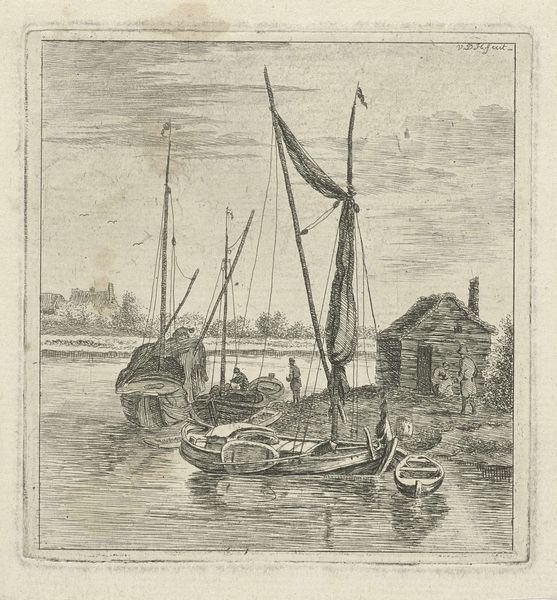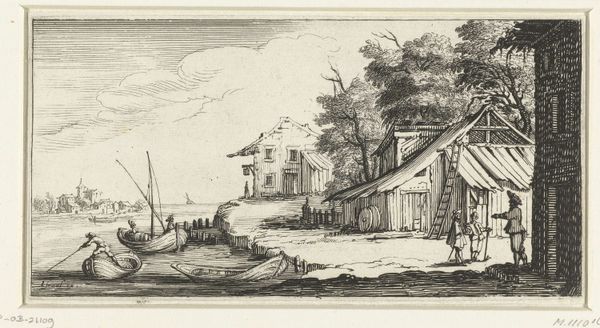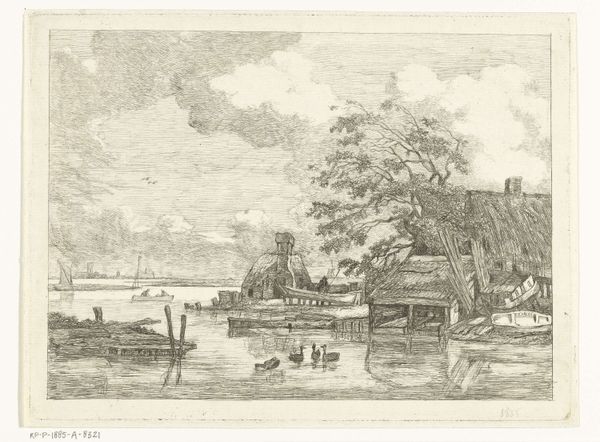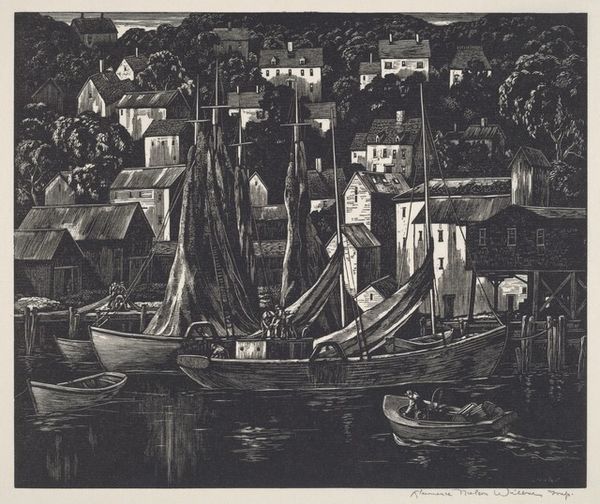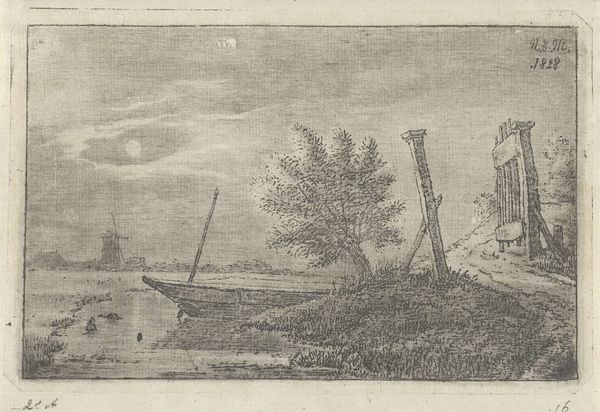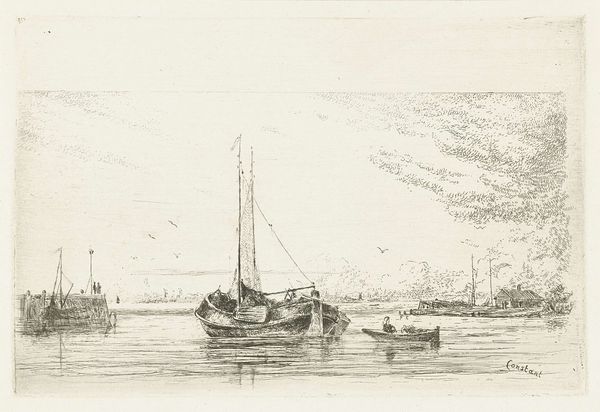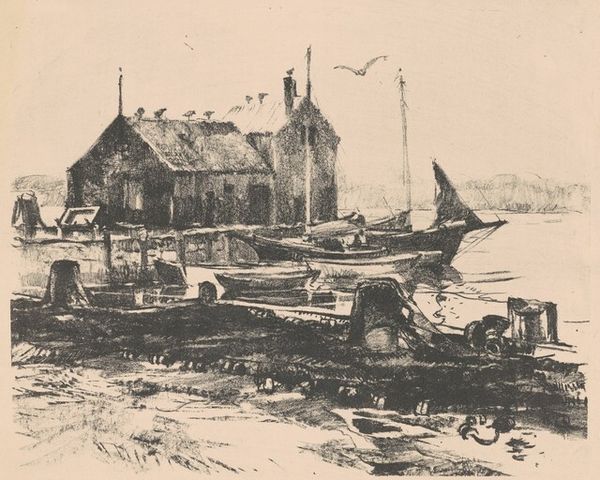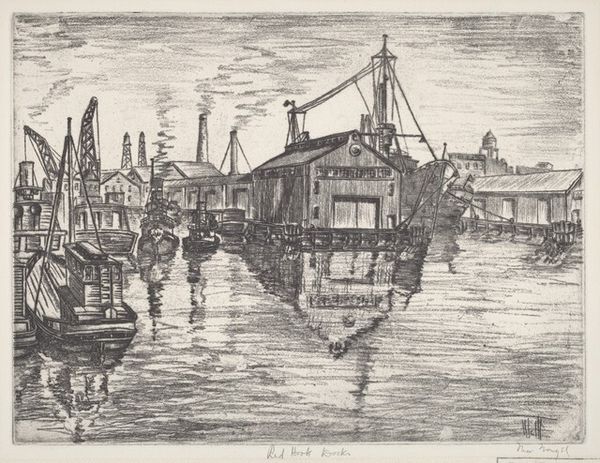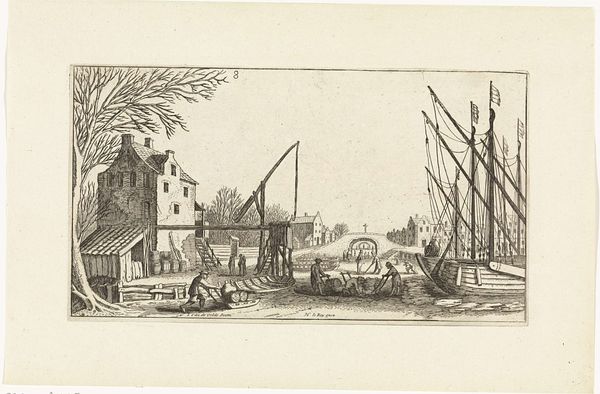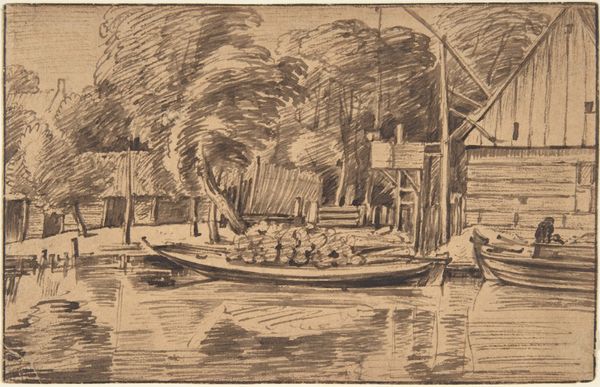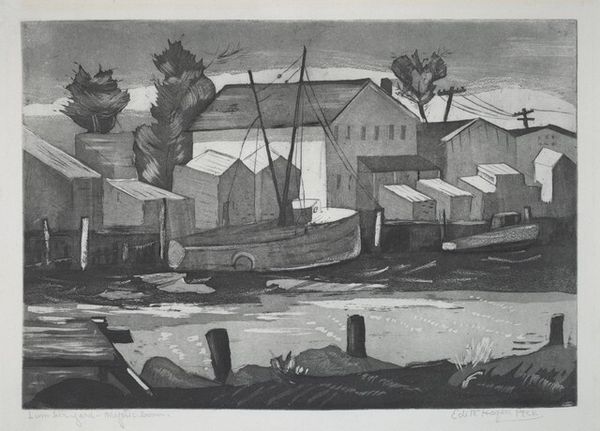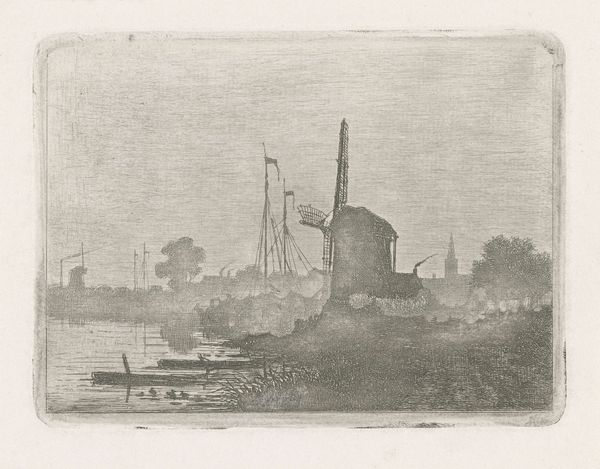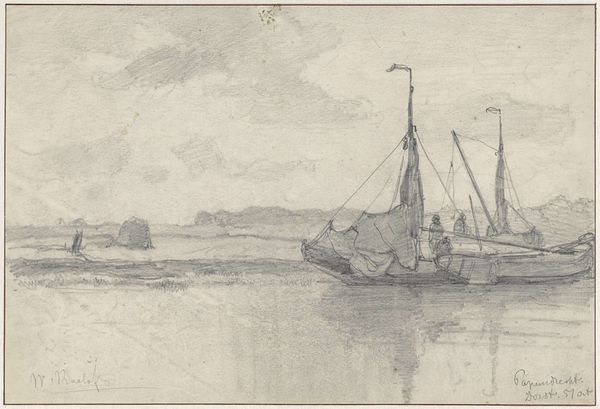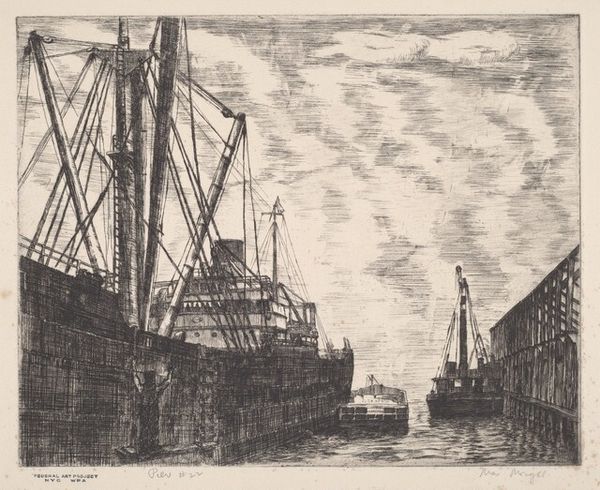
drawing, print, pencil
#
pencil drawn
#
drawing
# print
#
pencil sketch
#
pencil drawing
#
pencil
#
cityscape
#
realism
Dimensions: stone: 393 x -- mm image: 298 x 404 mm sheet: 431 x 524 mm
Copyright: National Gallery of Art: CC0 1.0
Curator: Well, look at this, an industrial lullaby almost. Margaret Hunt Lansing created this pencil drawing, Drydock, around 1939. Editor: Lullaby, huh? To me it screams, “Here there be toil!” Everything looks a bit slumped and gritty, the whole scene feels weighed down, almost… melancholic. Curator: I get that. It's a scene steeped in work. A boat is docked, maybe for repair. We see the architectural structures that dominate cityscapes– cranes, warehouses, factories– framed against a dramatic, almost operatic sky. What strikes me is how Lansing manages to imbue it with such sensitivity. Editor: It’s her touch, the hand of the artist present in the hatching, the textures… It makes it less about cold industry, and more about the human story _within_ the machines. It’s romantic somehow, even though it’s just a dry dock. Curator: Exactly! Consider when this was made – the late 30s, still feeling the reverberations of the Great Depression. Artists were very focused on representing American scenes and realities. Lansing's piece speaks to this trend of depicting the everyday life of workers. The industrial scene is elevated by her technique. It reminds us that these spaces held stories, hopes, and struggles. It’s a social history recorded with a soft pencil. Editor: It's interesting. Looking closely, she hasn’t romanticized it entirely. It’s honest, wouldn't you agree? There's no false optimism plastered on the buildings. More of a quiet dignity, a respect for the reality. Curator: I completely agree. I wonder about her choice of the pencil medium, too. Prints allowed these images to circulate widely and be seen by a broad audience. It democratized the image. Editor: It does have a lovely weight to it, despite being a “simple” pencil drawing. Looking at the steam billowing out of the tugboat… feels weighty, powerful. And look how it mimics the clouds… Curator: Beautiful observation. So, as a final thought, how has viewing the artwork changed how you now see its role? Editor: For me, seeing the drawing today reminds us of the necessity to examine these histories, how easily voices are muted. It invites introspection regarding how economic and social transformations shape identities, cities, lives. Curator: It serves as a tender yet resolute witness to working lives—of what continues to persist and also fade. Thank you.
Comments
No comments
Be the first to comment and join the conversation on the ultimate creative platform.
